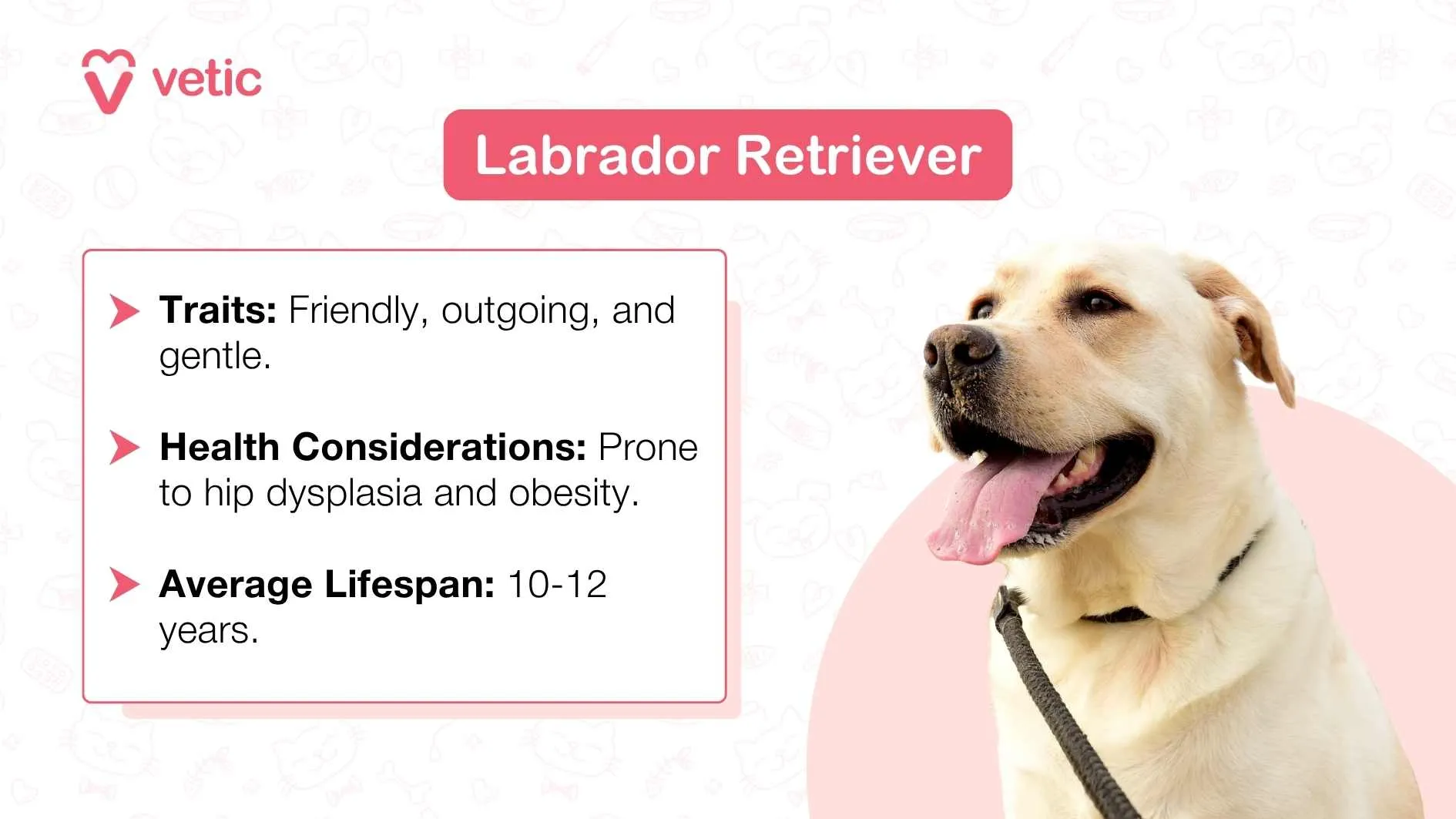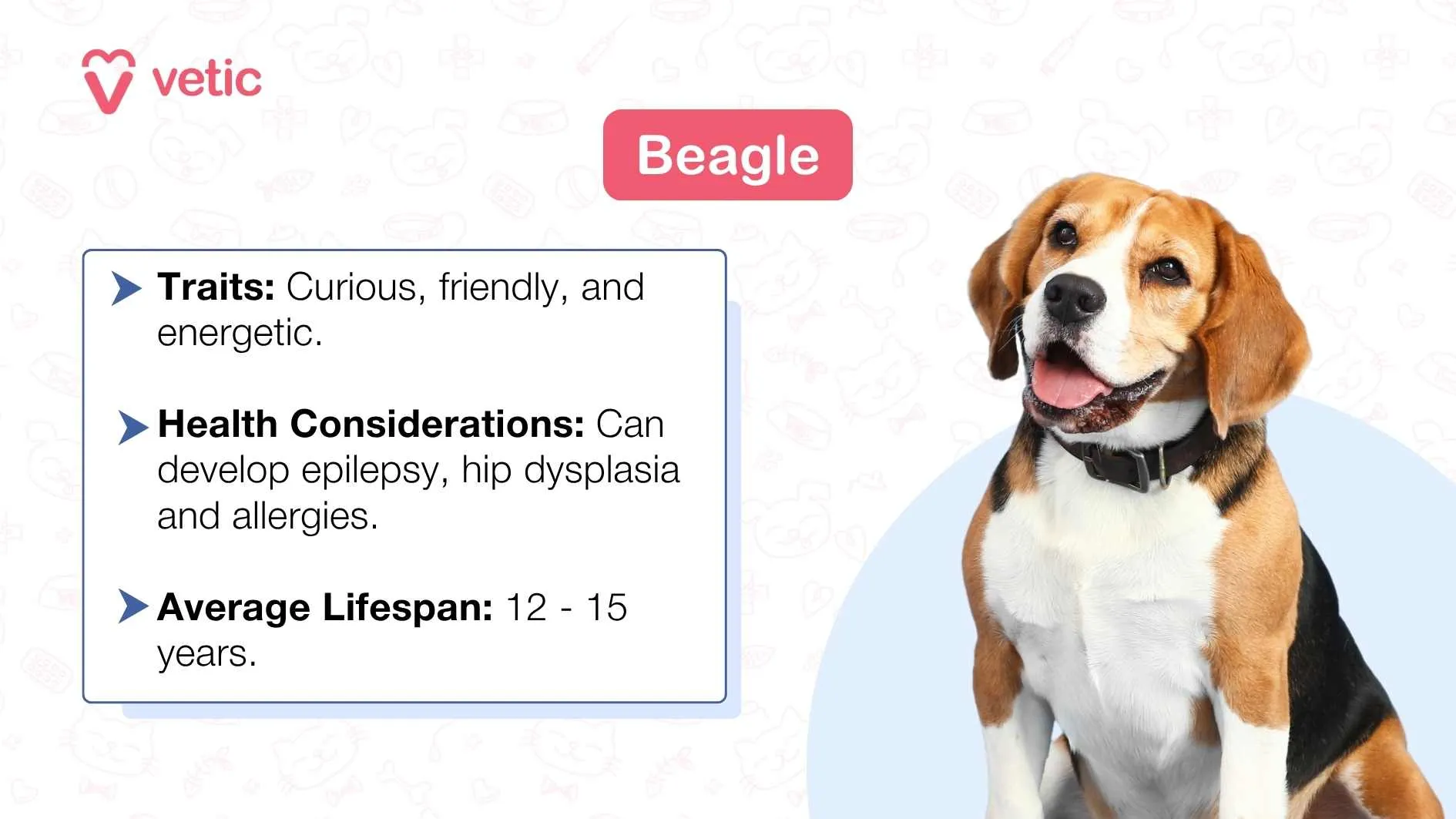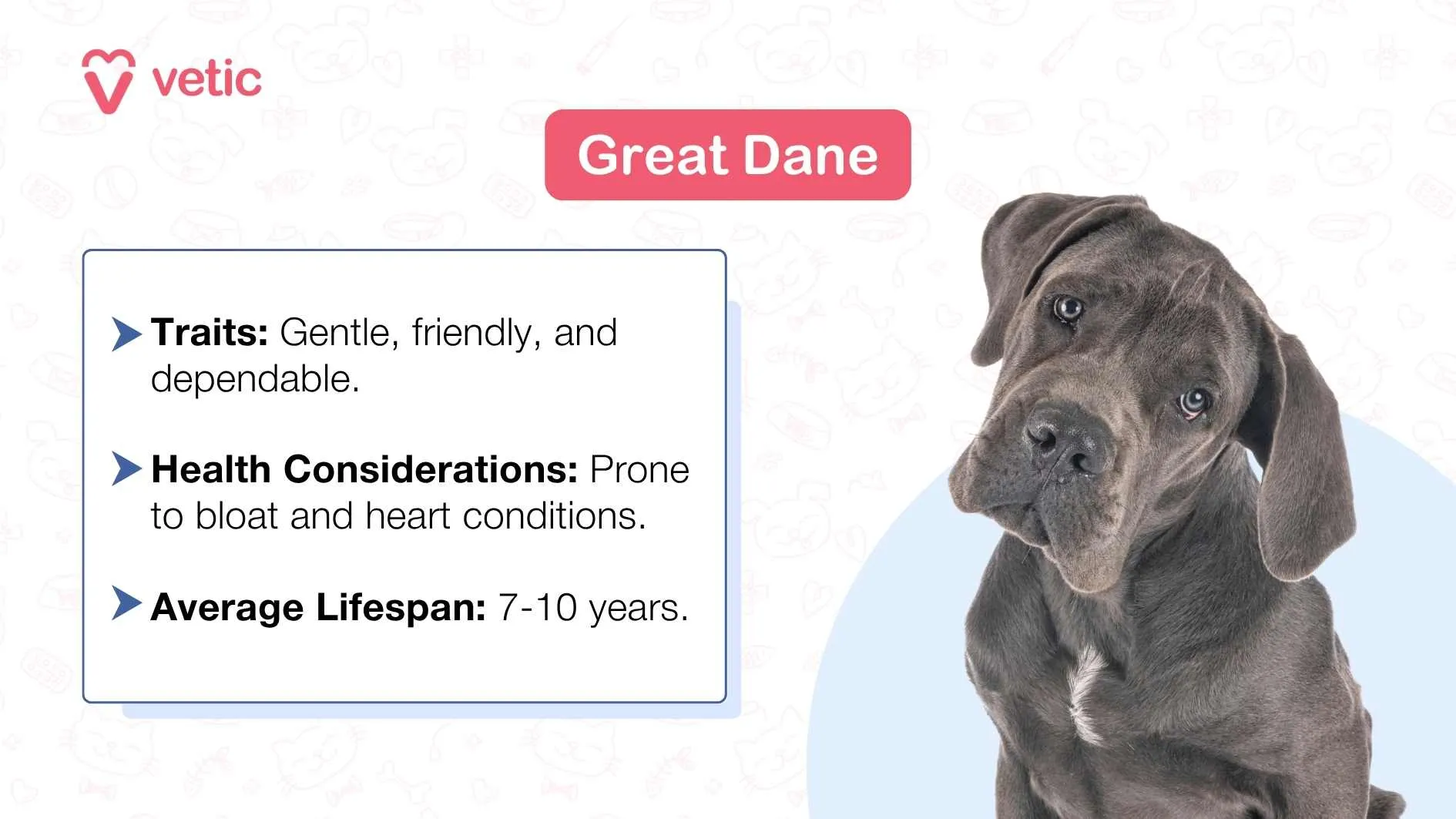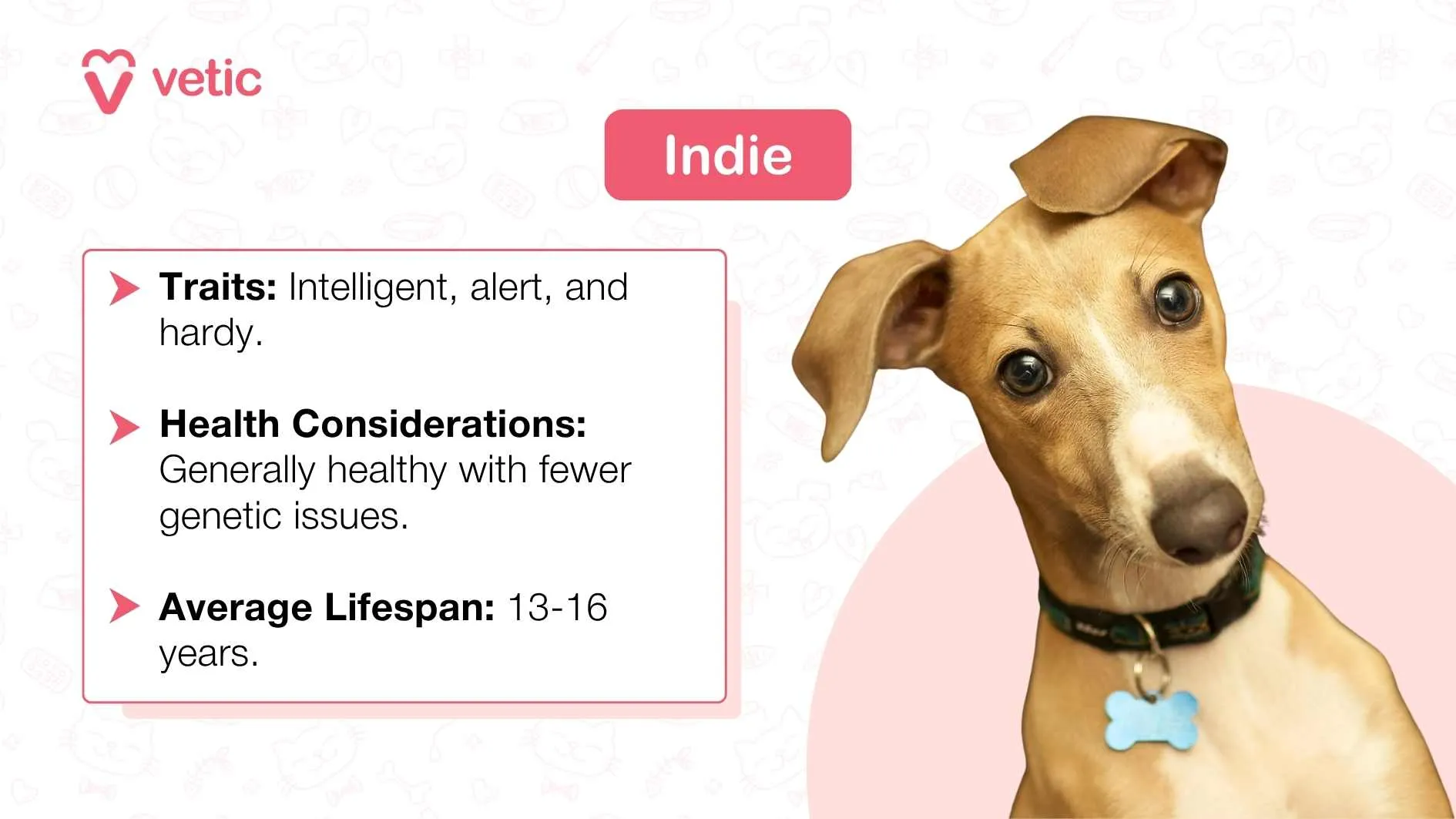Adopting a puppy is a joyous occasion and a significant commitment. Choosing the right furry companion for your family can be a daunting decision, especially with the diverse range of breeds available. Understanding the unique traits and average lifespan of different types of pet dogs can greatly influence your choice, ensuring a harmonious life together. India, with its varied climate and lifestyles, presents a unique context for pet parenthood, making it essential to choose a breed that adapts well to local conditions and family dynamics.
This guide delves into some of the most popular dog breeds in India, exploring their distinct characteristics, important health considerations, and average lifespans. From the universally loved Labrador Retriever to the resilient Indies, we aim to provide comprehensive insights to help you identify the perfect canine companion for your home. We’ll also discuss general factors affecting a dog’s longevity and how to foster a happy, healthy life for your beloved pet. For those seeking a furry friend that’s perfect for indoor living and minimal shedding, exploring best indoor small dogs that don’t shed can be a great starting point.
Understanding Popular Dog Breeds in India
India’s pet-loving community cherishes a wide array of dog breeds, each bringing its own charm and set of requirements. Here’s a detailed look at some of the most favored types of pet dogs in India.
1. Labrador Retriever
The Labrador Retriever consistently ranks as one of the most popular dog breeds worldwide, and India is no exception. Known for their friendly, outgoing, and gentle nature, Labradors make exceptional family pets. They are particularly good with children and possess a joyful demeanor that can brighten any home.
- Average Lifespan: 10-12 years
- Traits: Friendly, outgoing, gentle, intelligent, and highly trainable. They thrive on companionship and activity.
- Health Considerations: Labradors are prone to hip dysplasia and can easily become obese if their diet and exercise are not managed. Regular exercise, such as daily walks and playtime, combined with a balanced diet, is crucial for their well-being.
 Labrador Retriever dog sitting on a light pink background with food bowls
Labrador Retriever dog sitting on a light pink background with food bowls
2. German Shepherd
German Shepherds are renowned for their loyalty, intelligence, and versatility. These majestic dogs excel as working dogs, police dogs, and, with proper training and socialization, devoted family protectors. Their sharp minds and strong protective instincts make them excellent guardians.
- Average Lifespan: 9-13 years
- Traits: Loyal, intelligent, versatile, courageous, and highly trainable. They form strong bonds with their families.
- Health Considerations: This breed can suffer from hip and elbow dysplasia, common in many large breeds. Early training and socialization are paramount to channel their protective instincts positively and ensure they are well-adjusted family members.
3. Golden Retriever
Golden Retrievers are celebrated for their friendly, tolerant, and playful disposition. They are quintessential family companions, known for their patience and gentle nature with children. Their shimmering coats and ever-wagging tails make them a delight to have around.
- Average Lifespan: 10-12 years
- Traits: Friendly, tolerant, playful, intelligent, and eager to please. They are social dogs who love being part of family activities.
- Health Considerations: Golden Retrievers are prone to certain types of cancer and hip dysplasia. Regular veterinary check-ups are important for early detection and management of potential health issues, contributing to their overall health.
4. Beagle
Beagles are small, sturdy hounds known for their curious, friendly, and energetic personalities. They love to explore, guided by their keen sense of smell, and are generally great with kids. Their soulful eyes and melodious bay are distinctive features.
- Average Lifespan: 12-15 years
- Traits: Curious, friendly, energetic, and merry. They thrive on exploration and social interaction.
- Health Considerations: Beagles can develop epilepsy and hip dysplasia. They are also highly susceptible to food allergies and allergies in general. They require consistent training, regular exercise, and ample mental stimulation to prevent boredom and destructive behaviors.
 Beagle dog with a brown shape partially obscuring its face, on a light blue background
Beagle dog with a brown shape partially obscuring its face, on a light blue background
5. Pug
Pugs are charming, mischievous, and affectionate dogs known for their expressive, wrinkled faces and distinctive snorts. These compact companions are content to be lapdogs but also enjoy short bursts of playful activity. Their comical expressions win hearts effortlessly.
- Average Lifespan: 12-15 years
- Traits: Charming, mischievous, affectionate, and sociable. They bond closely with their human families.
- Health Considerations: Due to their brachycephalic (flat-faced) nature, Pugs are prone to brachycephalic obstructive airway syndrome (BOAS), leading to breathing difficulties. Obesity is another common concern. They need moderate exercise and a carefully controlled diet to maintain a healthy weight and minimize respiratory strain.
6. Boxer
Boxers are fun-loving, active, and loyal dogs that make excellent companions for active families. Their boundless energy and playful antics, combined with their strong protective instincts, make them wonderful family members. They are particularly good with children.
- Average Lifespan: 10-12 years
- Traits: Fun-loving, active, loyal, courageous, and intelligent. They need an outlet for their energy.
- Health Considerations: Boxers are prone to heart conditions and certain types of cancer. Regular exercise, a nutritious diet, and consistent health screenings are vital for their long-term health. For pet parents seeking dogs that don’t shed much medium size, boxers might require consideration due to their shedding patterns.
7. Rottweiler
Rottweilers are confident, loyal, and protective dogs. While their imposing appearance can be intimidating, they are known to be affectionate and playful with their families. They require experienced owners who can provide consistent training and socialization from an early age.
- Average Lifespan: 9-10 years
- Traits: Confident, loyal, protective, calm, and intelligent. They are natural guardians of their home and family.
- Health Considerations: Hip dysplasia and heart problems are common in Rottweilers. Proper training and socialization are essential to ensure they grow into well-behaved and stable adult dogs, managing their strong protective instincts effectively.
8. Dachshund
Dachshunds, with their distinctive long backs and short legs, are clever, lively, and courageous dogs. They are known for their playful nature and can be good with children when properly socialized. Their unique body shape contributes to their endearing charm.
- Average Lifespan: 12-16 years
- Traits: Clever, lively, courageous, playful, and curious. They possess a big personality in a small body.
- Health Considerations: Due to their long backs, Dachshunds are prone to spinal issues, including intervertebral disc disease (IVDD). Weight management is crucial to minimize strain on their spine. Owners should be mindful of activities that could injure their backs, such as jumping from heights.
9. Shih Tzu
Shih Tzus are affectionate, happy, and outgoing lapdogs, often described as charming and regal. Their flowing coats and friendly demeanor make them excellent companions for families, adapting well to various living situations. They thrive on human companionship.
- Average Lifespan: 10-18 years
- Traits: Affectionate, happy, outgoing, friendly, and playful. They enjoy being pampered and loved.
- Health Considerations: Shih Tzus are prone to dental issues, eye problems (like corneal ulceration), and brachycephalic syndrome. Regular grooming, including daily brushing of their long coat, and consistent dental care are necessary to keep them healthy and comfortable.
10. Great Dane
Despite their imposing size, Great Danes are gentle giants, known for being friendly and dependable. They are surprisingly good with kids, often displaying a calm and tolerant nature. Their majestic presence and affectionate personality make them unique family members.
- Average Lifespan: 7-10 years
- Traits: Gentle, friendly, dependable, patient, and good-natured. They are often described as “heartbreak dogs” due to their shorter lifespan.
- Health Considerations: Great Danes are prone to bloat (gastric dilatation-volvulus) and heart conditions. Regular vet visits, particularly for preventive screenings, and a proper diet designed for large breeds are vital for managing their health and ensuring they live as long as possible.
 Great Dane dog lying down with its head obscured by a gray square, on a light blue background
Great Dane dog lying down with its head obscured by a gray square, on a light blue background
11. Siberian Husky
Siberian Huskies are striking dogs, famous for their energetic and independent spirit, as well as their piercing blue or bi-colored eyes. They are friendly but can be strong-willed, requiring owners who can provide consistent training and ample exercise to match their stamina.
- Average Lifespan: 12-15 years
- Traits: Friendly, energetic, independent, intelligent, and known for their endurance. They have a strong prey drive.
- Health Considerations: Huskies are generally healthy but can be prone to hip dysplasia and various eye conditions, such as cataracts and progressive retinal atrophy. They need a lot of exercise and mental stimulation to prevent boredom and destructive behaviors, thriving in active households.
12. Indie Dog (Indian Pariah Dog)
The Indie Dog, or Indian Pariah Dog, is a robust and intelligent breed perfectly adapted to the Indian climate and lifestyle. They are known for their hardiness, alertness, and keen survival instincts. These native dogs are increasingly recognized for their desirable traits as pets.
- Average Lifespan: 13-16 years
- Traits: Intelligent, alert, hardy, loyal, and easily trainable. They adapt well to Indian environmental conditions.
- Health Considerations: Indie dogs are generally healthy with fewer genetic issues compared to many purebreds due to natural selection. Regular vet visits, a balanced diet, and sufficient exercise are usually enough to keep them healthy. They are often considered good family dog breeds that don’t shed significantly, making them easier to maintain in many Indian households.
 Indian Pariah Dog (Indie) sitting attentively on a light pink background
Indian Pariah Dog (Indie) sitting attentively on a light pink background
13. Doberman Pinscher
Doberman Pinschers are alert, loyal, and intelligent dogs, making them excellent guard dogs and dedicated family protectors. They are powerful and elegant, requiring firm but fair training and plenty of exercise to channel their energy constructively.
- Average Lifespan: 10-12 years
- Traits: Alert, loyal, intelligent, courageous, and energetic. They are very protective of their families.
- Health Considerations: Dobermans are prone to heart conditions, particularly dilated cardiomyopathy, and hip dysplasia. Proper training, consistent socialization, and ample physical activity are crucial to ensure their physical and mental well-being.
14. Cocker Spaniel
Cocker Spaniels are gentle, affectionate, and playful dogs, making them great companions for children and families. Their soft, expressive eyes and wagging tails are endearing, and they thrive on interaction and love.
- Average Lifespan: 10-14 years
- Traits: Gentle, affectionate, playful, intelligent, and eager to please. They love to be involved in family activities.
- Health Considerations: Ear infections are common due to their long, floppy ears, requiring regular cleaning. They can also be prone to hip dysplasia and certain eye conditions. Regular grooming, including ear care, and health check-ups are necessary to maintain their health.
15. Pomeranian
Pomeranians are lively, bold, and affectionate small dogs with a distinctive fluffy double coat. They make great companions for families and individuals alike, known for their spirited personality and alertness. Their small size makes them suitable for apartment living.
- Average Lifespan: 12-16 years
- Traits: Lively, bold, affectionate, intelligent, and curious. They often have a “big dog” attitude in a small package.
- Health Considerations: Dental issues are common in small breeds like Pomeranians, requiring diligent dental care. Tracheal collapse is another concern. Regular dental care and consistent vet visits are important to address these potential health problems. For those seeking dogs that don’t shed and don’t need grooming, Pomeranians might require more grooming attention due to their thick coats.
Lifespan Considerations for Indian Pet Dogs
Understanding the factors that influence a dog’s lifespan can help pet parents provide the best possible care, regardless of the breed.
Why Do Large Dog Breeds Have a Shorter Lifespan Compared to Small Dog Breeds?
Generally, large dog breeds tend to have shorter lifespans compared to smaller breeds, who typically do not have Brachycephalic Obstructive Airway Syndrome (BOAS). This phenomenon is attributed to several interconnected factors:
- Growth Rate: Large breeds experience rapid growth spurts during their developmental stages, which can place significant strain on their bodies. This accelerated growth may contribute to the earlier onset of age-related issues and diseases, such as bone and joint problems.
- Genetics: Many large breeds are genetically predisposed to specific health conditions that can shorten their lives. These include common ailments like hip and elbow dysplasia, various heart conditions, and certain aggressive cancers, which tend to manifest more frequently or severely in larger dogs.
- Metabolism: Larger dogs generally have slower metabolisms compared to their smaller counterparts. This difference in metabolic rate is thought to influence their aging processes, potentially leading to a more rapid progression through life stages at a cellular level.
Smaller dog breeds, including the resilient Indian Spitz, often enjoy a significantly longer lifespan compared to many large breeds, underscoring the general trend that size inversely correlates with longevity in dogs.
Why Do Brachycephalic Dog Breeds Have a Shorter Lifespan?
Brachycephalic, or short-nosed, breeds like Pugs, Shih Tzus, and Boxers often have shorter lifespans primarily due to a range of health problems associated with their distinctive facial structure.
- Breathing Difficulties: Their characteristic short nasal passages, elongated soft palates, and narrow nostrils can lead to Brachycephalic Obstructive Airway Syndrome (BOAS). This condition makes breathing difficult, especially in hot weather or during physical exertion, placing chronic stress on their respiratory and cardiovascular systems.
- Heat Sensitivity: Due to their inefficient panting mechanism (panting is how dogs cool down), brachycephalic breeds are more prone to heatstroke. India’s often hot climate poses a significant risk for these breeds, requiring owners to take extra precautions during warm periods.
- Dental Problems: Their compact jaws often result in dental crowding and misalignment, leading to increased susceptibility to dental diseases and gum infections. These issues can contribute to broader health problems if left untreated.
- Eye Issues: The prominent positioning of their eyes, a result of their flattened faces, makes them more susceptible to injuries, infections, and conditions like corneal ulcers.
Nurturing a Lasting Bond: Making Memories with Your Pet
While predicting the exact lifespan of any dog can be challenging due to genetic variability and environmental factors, what truly matters is the quality of life you provide and the cherished memories you create together. Every moment spent with your furry friend is precious and contributes to a fulfilling life for both of you.
Ensuring regular veterinary care, providing a balanced and nutritious diet tailored to their specific breed and age, and offering plenty of love, attention, and mental stimulation are fundamental to helping your canine companion live a happy and healthy life. Remember, each dog possesses a unique personality and brings its own special joy and companionship into your home. Embrace the bond you share and cherish every interaction with your paw baby. For those looking for smaller, non-shedding breeds for companionship, checking out the best inside small dogs that don’t shed could be very beneficial.
Frequently Asked Questions About Dog Breeds in India
1. Which dog breed lives the longest in India?
Indie dogs often live 13–16 years, or even longer, as they are inherently hardy, low-maintenance, and naturally adapted to the diverse Indian conditions and climate.
2. What is the average lifespan of popular dog breeds in India?
Most dog breeds popular in India generally live between 10–15 years. However, this largely depends on several factors, including their genetics, overall size, quality of diet, amount of exercise, and the regularity of their veterinary care.
3. Do small dog breeds in India live longer than large breeds?
Yes, as a general rule, smaller dog breeds tend to outlive larger breeds. This is attributed to their slower aging processes, a reduced incidence of certain genetic health issues, and less strain on their skeletal and cardiovascular systems over time.
4. Which dog breeds in India are easiest to care for?
Indie dogs, Beagles, and Pugs are often considered easier to manage. They typically require minimal grooming and demonstrate good adaptability to various Indian households and living environments, making them suitable choices for new or busy pet parents.
5. How can I increase my dog’s lifespan in India?
To extend your dog’s lifespan, provide a high-quality, balanced diet, ensure regular veterinary check-ups including timely vaccinations, offer consistent physical exercise, and maintain a stable, stress-free environment. Proactive care and a loving home are key.
6. Are brachycephalic breeds safe to adopt in India’s hot climate?
Brachycephalic dogs, such as Pugs and Boxers, require extra care and vigilant monitoring in India’s hot climate. Due to their inherent breathing difficulties, they are at a higher risk of heatstroke and respiratory distress, necessitating careful management during warm periods.
7. Which dog breeds are best for families with children in India?
Labrador Retrievers, Golden Retrievers, and Shih Tzus are widely considered family-friendly breeds. They are known for their gentle temperament, affectionate nature, and playful disposition, making them perfect and patient companions for children in Indian homes.
